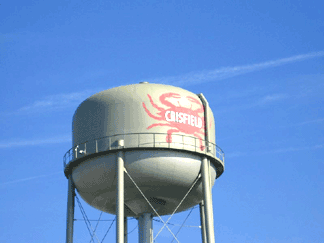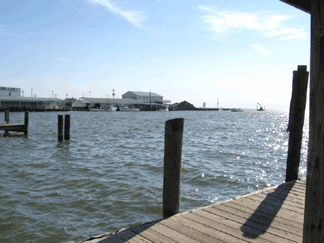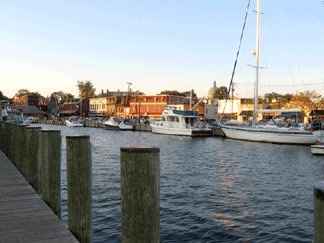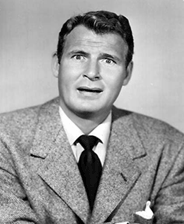vacation, part 3: egrets, i've seen a few
THE DELMARVA PENINSULA AND ANNAPOLIS
October 19th marked the 224th anniversary of General Cornwallis’ surrender at Yorktown and the end of the Revolutionary War. Washington, Rochambeau, and Lafayette had marched some 17,000 men into the Virginia town and surrounded Cornwallis in the previous weeks, and there was nothing for the British general to do but wave the white flag and return home with his defeated forces.
In the subsequent years America grew into a great nation despite wars, disasters, the poetry of Rod McKuen, hippies, that bastard at Domino’s back in 1998 who wouldn’t honor my coupon, the near ruination of the Star Wars franchise by George Lucas, and the eloquence of Toby Keith being relegated to truck commercials.
The rest of the world discovered soccer and mistakenly named it “football”.
It all worked out for the best, and October 19th would’ve been the perfect day to visit Yorktown, but Mrs. Camino and I already had plans to cross the Chesapeake and explore the towns along Virginia’s eastern coast into Maryland. This is the Delmarva Peninsula, a tiny finger of land on the map that separates the Chesapeake from the Atlantic, and it costs you twelve bucks to drive the toll road that comprises its spine.
The weather was perfect that day. There is a nature reserve just to the right once you reach the peninsula from the south, and Mrs. Camino and I stopped to walk along their bird and butterfly watching trails.
I didn’t see any butterflies.
There were quite a few birds though, and many of them were much the same as we have in Middle Tennessee—with the exception of the snowy egrets, a bird that obviously does not require snow. They look very much like the blue herons one can see along the Stones River, except that they are not blue and they do not peck around in trash for sustenance.
We drove up highway 13 toward Maryland with The Thrills’ So Much for the City in the CD player. It seems to have become our standard driving around CD, as it is perfect for any occasion and works for all seasons. The same can also be said for The Allman Brothers at Fillmore East, and it quickly followed.
In the subsequent years America grew into a great nation despite wars, disasters, the poetry of Rod McKuen, hippies, that bastard at Domino’s back in 1998 who wouldn’t honor my coupon, the near ruination of the Star Wars franchise by George Lucas, and the eloquence of Toby Keith being relegated to truck commercials.
The rest of the world discovered soccer and mistakenly named it “football”.
It all worked out for the best, and October 19th would’ve been the perfect day to visit Yorktown, but Mrs. Camino and I already had plans to cross the Chesapeake and explore the towns along Virginia’s eastern coast into Maryland. This is the Delmarva Peninsula, a tiny finger of land on the map that separates the Chesapeake from the Atlantic, and it costs you twelve bucks to drive the toll road that comprises its spine.
The weather was perfect that day. There is a nature reserve just to the right once you reach the peninsula from the south, and Mrs. Camino and I stopped to walk along their bird and butterfly watching trails.
I didn’t see any butterflies.
There were quite a few birds though, and many of them were much the same as we have in Middle Tennessee—with the exception of the snowy egrets, a bird that obviously does not require snow. They look very much like the blue herons one can see along the Stones River, except that they are not blue and they do not peck around in trash for sustenance.
We drove up highway 13 toward Maryland with The Thrills’ So Much for the City in the CD player. It seems to have become our standard driving around CD, as it is perfect for any occasion and works for all seasons. The same can also be said for The Allman Brothers at Fillmore East, and it quickly followed.
Open marshlands gave way to centuries old farms. Like anywhere in the south, you can see old crumbling plantation houses, hundred year-old farmhouses, shotgun shacks, new vinyl constructions, trailer parks, a Hardee’s or Starbuck’s alongside a local Mexican or seafood restaurant, and maybe a train, if you’re lucky. It seems a bit more picturesque here, as the land is flat across the peninsula and treeless through the tracts of farmland. There are rows of Victorians being remodeled along the side streets to the waterside communities, and the new construction around them is being done in a more complimentary arts and crafts style. Most communities seem to be paying attention to that sort of thing now, and it really should be a priority in a place that attracts runoff from the historical tourism, even if most folks never cross and explore the Chesapeake this far south.
I had never really paid much attention to the map, and Virginia stretched on for a lot longer than I expected it to. The restaurants began boasting of their crabcakes about an hour before we finally hit Maryland, where the thin peninsula blossoms out into a much wider stretch of land, but we were waiting on Crisfield before stopping for a late lunch of beer and the state’s signature dish.

Mrs. Camino read a book set in Crisfield once, and the town had become our only designated place to visit on an otherwise improvisational daytrip. It sits at the southwestern most tip of Delmarva Maryland. The tourist season had obviously passed, and the town was dead outside of the fishing boats coming in and out of the harbor and the construction of a block of new condos and hotels. We parked at the city pier and took a walk from there.

There were a few small diners and dive bars open, but none of them really appealed to us that much. It was getting well into the afternoon. We tied ourselves over with the last of some butter pecan peanuts we had picked up in Williamsburg and then decided to head further into Maryland.
We took county roads this time. They contained the same assortment of houses that we found along the highway, but these were much closer to the road. You could really see the peeling paint, stone foundations, recently added satellite dishes, and green plastic porch furniture from Home Depot. The whole peninsula was full of these houses, and I wondered how many hurricanes each had weathered. I wondered how many were still in the original families and what the reaction would be if I were to just pull over and ask.
But it was just an idle curiosity and not all that important, I suppose. Besides, I generally prefer making things up to interviewing folks for genuine facts. This trait is somewhere on the list of reasons why I didn’t last too long as a journalism major, but it is nowhere near the top.
We spent the rest of the afternoon heading up the Maryland coast towards the bridge to Annapolis. It seemed like a good enough place for crabcakes, and we really didn’t have time to head all the way up to Baltimore. Besides, there had been a terrorist threat on the tunnel there the day before, and the home of the Naval Academy just seemed a safer destination.
That was all that I knew about Annapolis, and part of me was picturing the actual town part of it as one big row of bars with continuous bar fights and sailors crashing through the windows. The sailor would then dust himself off, replace his Popeye hat and tilt it askew, take a drag off his cigar, push up his sleeves, and walk right back in. Some of them would just climb back through the freshly broken window, but a good, self-respecting sailor would return by the door.
There turned out to be no bar fights going in Annapolis—even despite the fact that it is home to a number of Irish pubs.
The state capitol sits on a hilltop overlooking the bay. There is a one-way circle surrounding the capital, and downtown shoots off in spokes down the hill. Each one contains its share of seafood and various ethnic restaurants, bars, clothing stores, town houses, law offices, old hotels, and other establishments residing in buildings of historic landmark status. There were trees along the sidewalk, and their deep reds and bright oranges and blended well with the red brick.

We parked along the city pier and walked up and down a few of these looking for a place to eat. There were many, and some had been in business for over two centuries, but most were a bit too steep in the crabcake department. Roirdan’s Saloon wasn’t too bad, and it looked out over the city pier, so we settled in for crabcakes and beer. Mrs. Camino tried another local brewery whose name I can’t remember, and I had a Bass Ale.
I do love me some Bass Ale.
Roirdan’s did not disappoint, but I regret that we had only an hour to see the town.
I had never really paid much attention to the map, and Virginia stretched on for a lot longer than I expected it to. The restaurants began boasting of their crabcakes about an hour before we finally hit Maryland, where the thin peninsula blossoms out into a much wider stretch of land, but we were waiting on Crisfield before stopping for a late lunch of beer and the state’s signature dish.

Mrs. Camino read a book set in Crisfield once, and the town had become our only designated place to visit on an otherwise improvisational daytrip. It sits at the southwestern most tip of Delmarva Maryland. The tourist season had obviously passed, and the town was dead outside of the fishing boats coming in and out of the harbor and the construction of a block of new condos and hotels. We parked at the city pier and took a walk from there.

There were a few small diners and dive bars open, but none of them really appealed to us that much. It was getting well into the afternoon. We tied ourselves over with the last of some butter pecan peanuts we had picked up in Williamsburg and then decided to head further into Maryland.
We took county roads this time. They contained the same assortment of houses that we found along the highway, but these were much closer to the road. You could really see the peeling paint, stone foundations, recently added satellite dishes, and green plastic porch furniture from Home Depot. The whole peninsula was full of these houses, and I wondered how many hurricanes each had weathered. I wondered how many were still in the original families and what the reaction would be if I were to just pull over and ask.
But it was just an idle curiosity and not all that important, I suppose. Besides, I generally prefer making things up to interviewing folks for genuine facts. This trait is somewhere on the list of reasons why I didn’t last too long as a journalism major, but it is nowhere near the top.
We spent the rest of the afternoon heading up the Maryland coast towards the bridge to Annapolis. It seemed like a good enough place for crabcakes, and we really didn’t have time to head all the way up to Baltimore. Besides, there had been a terrorist threat on the tunnel there the day before, and the home of the Naval Academy just seemed a safer destination.
That was all that I knew about Annapolis, and part of me was picturing the actual town part of it as one big row of bars with continuous bar fights and sailors crashing through the windows. The sailor would then dust himself off, replace his Popeye hat and tilt it askew, take a drag off his cigar, push up his sleeves, and walk right back in. Some of them would just climb back through the freshly broken window, but a good, self-respecting sailor would return by the door.
There turned out to be no bar fights going in Annapolis—even despite the fact that it is home to a number of Irish pubs.
The state capitol sits on a hilltop overlooking the bay. There is a one-way circle surrounding the capital, and downtown shoots off in spokes down the hill. Each one contains its share of seafood and various ethnic restaurants, bars, clothing stores, town houses, law offices, old hotels, and other establishments residing in buildings of historic landmark status. There were trees along the sidewalk, and their deep reds and bright oranges and blended well with the red brick.

We parked along the city pier and walked up and down a few of these looking for a place to eat. There were many, and some had been in business for over two centuries, but most were a bit too steep in the crabcake department. Roirdan’s Saloon wasn’t too bad, and it looked out over the city pier, so we settled in for crabcakes and beer. Mrs. Camino tried another local brewery whose name I can’t remember, and I had a Bass Ale.
I do love me some Bass Ale.
Roirdan’s did not disappoint, but I regret that we had only an hour to see the town.
The only drawback to visiting Annapolis is that it is hard to avoid Washington traffic to get there. It was late at night when we drove back along the edges of DC, but the beltway was packed and slow moving. There was no sun by which to gauge direction and no real landmarks. Each exit held the same collection of fast food restaurants and gas stations, and I would’ve swore that we were merely going in circles. When we finally made to the interstate back into Virginia the traffic there was even thicker, and a sea of taillights looked like lava flowing downhill from the capital.
My family went to Washington for a vacation when I was in third grade, and all I remember from it are seeing rats the size of wiener dogs and the prostitute who chased my dad’s Cadillac for nearly three blocks. We were lost in the bad part of town for hours before we realized that there is no good part of town.
However, I did enjoy the Smithsonian.
What I would’ve enjoyed on the way back to Williamsburg that night was a cigarette. I didn’t bring any with me on the trip, and time around the chainsmoking Sister Camino generally quells any tobacco desire for a good week or so, but the late night and slow traffic had the body calling for some sweet nicotine.
Mrs. Camino was kind enough to run a sweep of the car for any near empty packs that may have made their way under the seat or to the back of the glove compartment and was able to locate a small cigar at the bottom of the console between our seats. It was broken, but still in the plastic wrap. She unwrapped it and lit each half, and it was as stale as expected, but it served its purpose. Mrs. Camino tried to stay neck and neck with me on her half, but she coughed quite a bit and gave up before exhausting her allotment. There was something cute about that.
“I shouldn’t have done that,” she said.
Coming Soon (more than likely): The Road Home



3 Comments:
Rex, I'm sorry I buried this travel tip within one of those
boring political posts, but I could have saved you the trip to that most hated town of Annapolis. (It's football season, and Army-Navy is only a month off.)
On Route 13 not far north of the Chesapeake Bay Bridge is Sting
Ray's (item 19). It's a fine restaurant and gas station rolled into one. (I know that, like kosher barbecue, it's a combination that's hard to comprehend.)
Still, the food is great and the wine list is quite good for an Exxon station.
Chez Exxon, as it more commonly known, is one of those quirky places unique to that most interesting and semi-detached piece of land known as the Eastern Shore.
Wow. I feel so incomplete for having missed the Chez Exxon, Bob. Any gas station with a wine selection is certainly worth another trip.
I'll have to pass this on to Sister Camino.
Also, I'll keep heading north until I hit West Point next time.
Post a Comment
<< Home